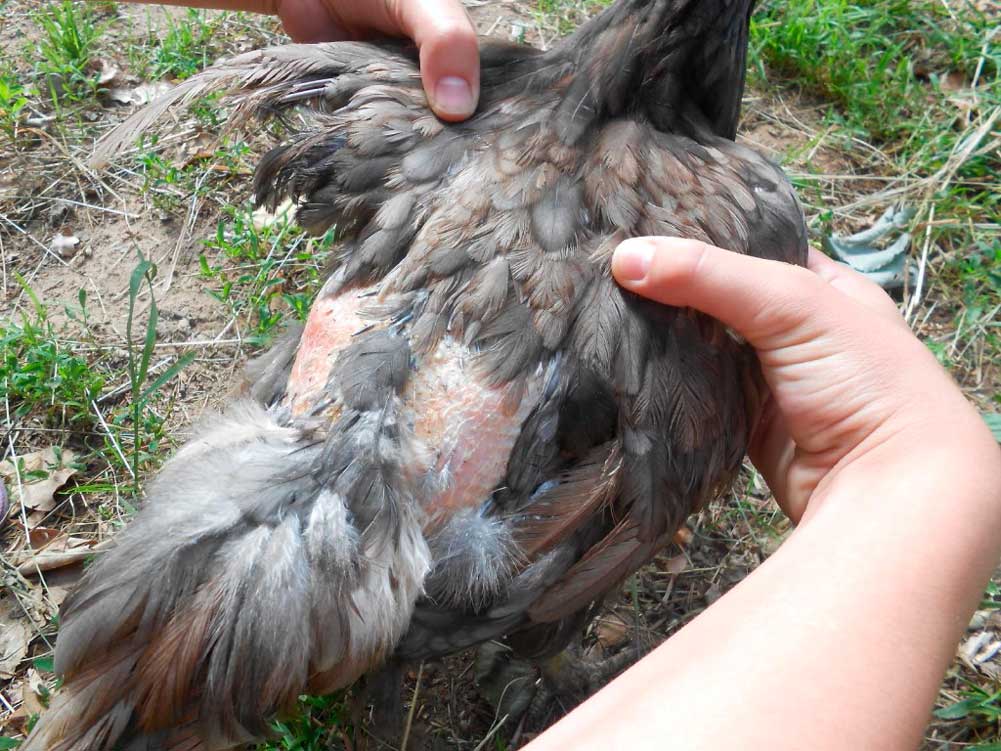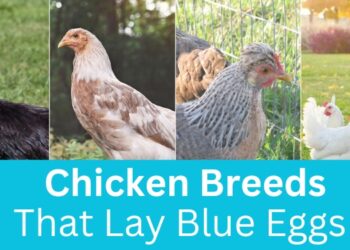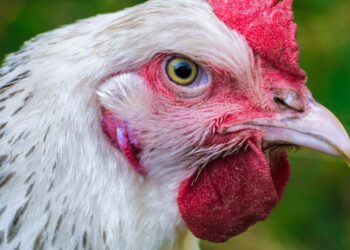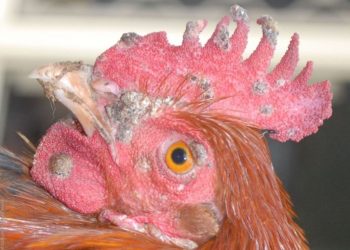Many chickens will come into contact with lice at some point in their lives. Especially in the summer, the small parasites can form a real plague, where they are frequently present in the chickens. The different types of lice can cause the chickens a lot of itching and irritation. It is therefore good for a hobby chicken farmer to be well prepared for this.
First of all, it is good to know whether you are dealing with lice, red mites, mites, or fleas. In addition, you must recognize the symptoms in the chickens so that you can treat the lice in time. In addition, there are several ways to reduce the chance of getting lice.
Difference Between Parasites
Lice are common parasites in chickens. Lice are often annoying for the chickens, they cause irritation and can cause anemia or bald spots. However, lice are less harmful to the health of chickens than many other parasites, such as red mites or other mites and fleas.
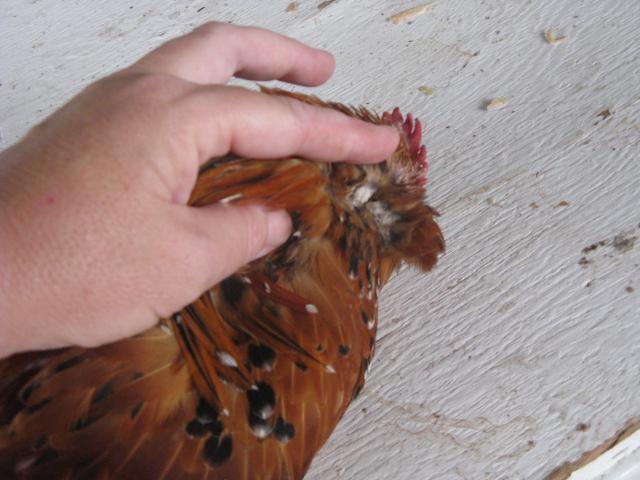
Lice
Lice are small critters that can live between the feathers or on the skin of the chickens. Lice can be seen with the naked eye and have six short legs. Lice live on the feathers, blood, or dander of the chickens. Because lice crawl slowly, they cannot easily land on people. If they do end up on humans, they can cause irritation and itching, but they will not survive long.
Mites or Red Mites
However, lice in chickens are often confused with the well-known red mite, which in the long run can even be fatal for chickens. But red mites are actually not real lice, but mites. Other names for the red mite are red bird mite or bird louse mite. The difference between mites and lice can be recognized by the number of legs. Mites have eight legs while lice have 6.
Fleas
In addition to lice and mites, fleas can also parasitize the chickens. Fleas are also visible to the naked eye and have 6 legs. Unlike lice and mites, fleas can jump. Because of this, it often happens that fleas also bite people, which can cause itching and bruising. Like lice and nits, fleas cannot live on humans.
Types of lice
Chickens can have different types of lice. They can suffer from brown body lice, feather lice, down lice, goniodes, wing lice, and chicken head lice.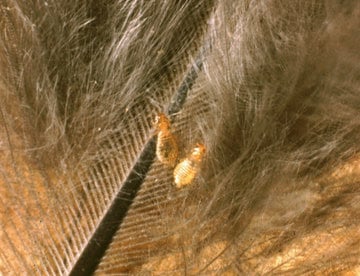
Brown Body Lock
This louse lives on chicken dander. This irritates the skin, which leads to itching and stress in the chicken. The brown body louse is mainly around the cloaca, or the anus, and on the belly of the chickens.
Feather Lice
Feather lice are common in chickens. In contrast to brown body lice, feather lice are easier to detect in chickens by checking the feathers carefully. The lice live in between the feathers and live on the keratin, the protein from which feathers consist. Feather lice can damage the feathers and cause them to fall out. Itching can also cause irritation and bald spots.
Down Locks
A down louse is a very small louse that sits at the base of the chicken’s feathers. You can distinguish them from feather lice by their size because feather lice are larger than down lice. Furthermore, down lice do not occur on the head and wings of the chickens.
Goniodes
Goniodes are very large lice and often sit on the belly of the chicken. Here the goniode causes itching just like the other lice.
Wing Lice
As the name implies, the wing louse sits near the wings of the chicken. The lice often choose the warmest spot, namely under the wing of the chicken. The louse eats the dander on the skin of the chickens.
Chicken Head Louse
The chicken head louse is on the head and neck of the chicken. Because the chicken cannot reach it well, it is often more difficult to recognize. The chicken does not get bald spots on the head. However, skin irritation can occur, which can be seen if the chicken is looked at closely.
Reading suggestion: 12 Common Chicken Diseases, Symptoms And Treatment
Recognizing Lice in Chicken
Lice are difficult to see between the feathers of the chickens. If you examine the chickens well, a number of species will certainly be recognizable, but often lice are easier to recognize by keeping an eye on the chickens and their behavior. Symptoms in chickens from lice may include:
- Restless chickens showing more aggressive or different behavior
- Lots of flakes between the feathers
- Pecking with the beak between the plumage
- Spring failure and bald spots
Unlike mites and fleas, lice are usually not found in the night cage. Lice generally remain on the chickens during the day, because they cannot survive long without the chicken.
Influence of Lice on Chicken Health
If lice are left untreated, it can affect the health of the chickens. Itching and scratching can cause bald spots, making the chickens more susceptible to infections. In addition, the lice can in some cases cause anemia in the chicken.
How To Treat Lice in Chicken
Lice are generally easy to treat. There are various remedies available for lice. Because all lice belong to the same rank, the anti-lice products work against all species. Anti-lice products often consist of sprays with pyrethrin or piperonal butoxide that must be applied to the chickens.
Nits hatch after 4 days or more. By repeating the treatment two or three times, the new lice are also killed. Make sure all chickens are treated so they can’t re-infect each other. Because the anti-lice agent can also end up in the eggs, it is best not to eat the eggs for 7 days after the treatment. It is wise to also clean the loft because sometimes lice are also left behind.
Reding Suggestion: 300 Australian Parrot Names
Preventing Lice
Preventing lice is not always possible. However, there are ways to deter lice. Especially when several preventive measures are taken, this could reduce the risk of lice in the chickens.

Dust Bath
Chickens like to take a dust bath. This is very beneficial for combating lice. The fine sand causes the lice to suffocate. Therefore, make sure that there are sufficient opportunities for taking a dust bath. If chickens roam freely, in most cases there are plenty of options. Otherwise, it is wise to place a box with white sand, possibly supplemented with anti-lice powder, in the run. Place this on a covered part, so that the dust bath does not turn into a mud bath after a rain shower
Diatomaceous Earth
Diatomaceous earth consists of small siliceous dried algae. Diatomaceous earth can be mixed through a dust bath, and the chickens then ensure that the skin and feathers are treated with the diatomaceous earth. The sharp pebble-like material can then prevent the lice and nits from nesting on the skin or feathers.
Tobacco Stems, Ferns, and Tansy
Lice do not like certain plants such as tobacco stems, ferns, and tansy. Planting these frequently in the chicken coop can help prevent lice in chickens. You can also dry and spread the plants in the loft.
Garlic
Lice also don’t like the garlic smell. Giving a clove of garlic can therefore have a preventive effect against lice. It is also possible to put a clove of garlic in the drinking water of the chickens.


